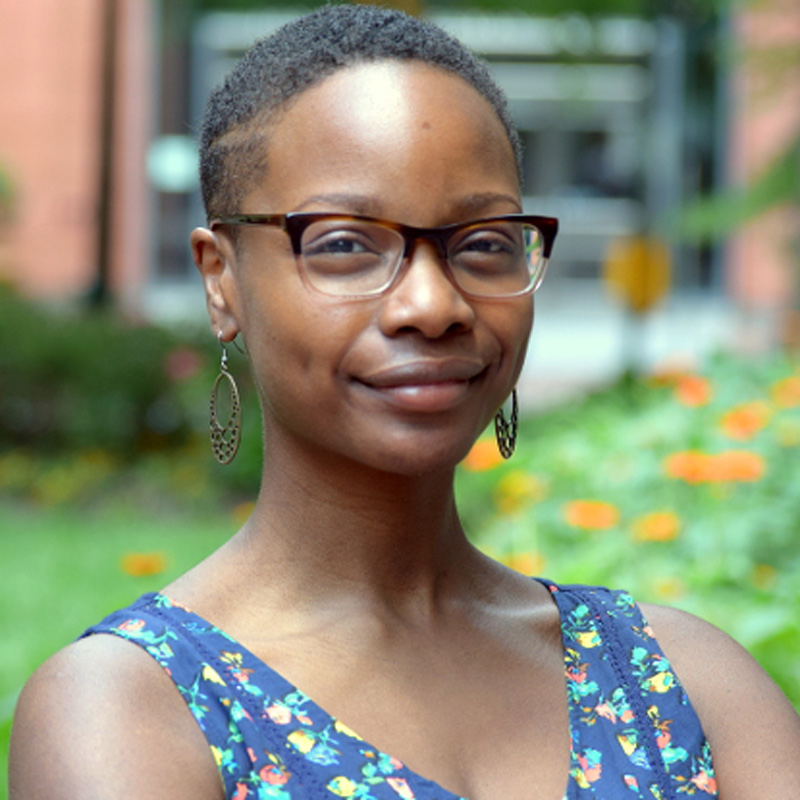Partnered, but Still Poor
Regina Baker, Assistant Professor of Sociology, challenges literature that touts marriage as a cure for poverty.
Want to avoid being poor? Get married.
That’s advice federal policymakers have been peddling since 1965, when assistant labor secretary Daniel Moynihan issued a report blaming the prevalence of single motherhood among Black families for America’s racial wealth gap. The publication sparked a flurry of marriage-promoting policies that has persisted for decades; presidents Bill Clinton, George W. Bush, and Barack Obama all introduced programs endorsing two-parent households.
Academic scholarship has long echoed Moynihan’s claims, bolstering the argument that marriage breeds economic stability. But glaring oversights render many studies involving families, poverty, and racial inequality inadequate, according to Regina Baker, Assistant Professor of Sociology.
“Research kind of hit a brick wall and stopped at this behavioral perspective, focusing on individual decisions—in this case, Black women having kids out of wedlock,” Baker says. “People were not even thinking about the roles American history, racism, and systems of oppression play in reproducing poverty. How can you study racial inequality but not explore these very real contextual factors?”
Baker has been striving to do just that, including in her paper “Family Structure, Risks, and Racial Stratification in Poverty,” co-authored by sociologist Deadric Williams from the University of Tennessee and published last July in the journal Social Problems. The pair contends that although single-parent families in the U.S.—more of which are Black and Latinx than white—do experience poverty at higher rates than households with married partners, family structure alone could not explain the disparities.
“If marriage is the answer to poverty, then when we look at the economic resources of married families across racialized groups, they should all be about the same, right?” Baker says. “So why do we see that poverty rates are consistently higher among married Black and Latinx families as compared to their white counterparts? Clearly, the impact of marriage is not the same for everybody.”
To elucidate race’s role in financial inequality, Baker and Williams used data from the Fragile Families and Child Wellbeing Study, a longitudinal study comprising nearly 5,000 families in large U.S. cities. Beyond assessing mothers’ marital statuses, they tallied various risk factors known to influence financial stability—things like employment status, physical and mental health conditions, and access to “social safety nets” for needs like emergency childcare. This enabled them to identify intersections between the prevalence of these poverty risks, actual poverty level, family structure, and race.
Across the board, Baker says, findings showed that Black and Latinx mothers experienced greater poverty than white mothers—regardless of their risk prevalence or their marital status.
“These results go against this common perception regarding race and poverty that marriage is the end-all, be-all solution,” she says. “If the traditional family structure approach held up, we would expect people across racialized groups to do better financially as long as they were married. But from our approach, using a racial stratification argument, we would expect differences across racialized groups. And that’s exactly what we saw.”
Baker says that among their most striking findings was the fact that Latinx single or cohabitating mothers had the lowest number of poverty risks of everyone studied—but still had higher actual poverty rates than white mothers. And the result she calls “the real kicker” showed that married Black women who had no identified poverty risks were just as likely to be poor as married white women with three or more risks.
“The graph for that one is an example of how a picture is worth 1,000 words. I never would have thought that a person with no poverty risk would end up as poor as someone with multiple risks,” she says. “This is about racism in America contributing to an unequal distribution of resources, so it is frustrating that the default narrative is always about Black families’ broken homes. The fixation on family structure is a way of blaming the victim and ignores broader structural mechanisms.”
Although she acknowledges that two-parent households often do bring in more income than homes of single mothers, Baker hopes this study and other similar studies illustrating racial variation in the impact of family structure on poverty will make researchers and legislators rethink their tendency to rely on behavioral explanations for economic racial inequality.
“I’m excited to be providing evidence that challenges flawed assumptions,” she says. “Our work is getting people’s attention, and scholars are starting to admit that maybe they haven’t been looking at these issues the right way. Many of them want to do better, and as a poverty and inequality scholar, that gives me some hope.”



